Q
What engine is in the 2018 ASX?
In 2018, the Mitsubishi ASX offered two gasoline engine options in the Malaysian market, namely the 1.6-liter MIVEC naturally aspirated engine (code 4A92) and the 2.0-liter MIVEC naturally aspirated engine (code 4B11). The 1.6-liter version has a maximum output power of 114 horsepower and a torque of 149 Nm, and is mated to a 5-speed manual transmission. The 2.0-liter version can produce 148 horsepower and 197 Nm of torque, and is paired with a CVT continuously variable transmission. Both of these engines adopt Mitsubishi's signature MIVEC variable valve timing technology, which can balance power and fuel economy, making them suitable for both city driving and long-distance travel in Malaysia.
It's worth mentioning that the MIVEC technology optimizes the valve opening timing and lift, which not only improves the low - speed torque performance but also maintains a smooth power output at high speeds. This design is particularly suitable for the mountainous roads and highways in Malaysia. At the same time, Mitsubishi engines are well - known for their durability, so local car owners can use them with confidence. When it comes to maintenance, it is recommended to follow the official recommended 10,000 - kilometer interval and use standard - compliant engine oil to ensure the long - term stable operation of the engine.
Special Disclaimer: This content is published by users and does not represent the views or position of PCauto.
Related Q&A
Q
What tyre pressure for 2018 Mitsubishi ASX?
The recommended standard tire pressure for the 2018 Mitsubishi ASX usually ranges from 32 to 35 psi (pounds per square inch). The specific value may vary slightly depending on the vehicle configuration, tire size, or load. Owners can refer to the vehicle's user manual or the label on the driver's door frame to get accurate information.
In Malaysia's tropical climate, tire pressure will rise slightly due to high temperatures. Therefore, it is recommended to check and adjust the tire pressure in the morning or when the tires are cool to ensure driving safety and fuel efficiency. Proper tire pressure can not only extend the tire life but also improve the vehicle's handling and comfort. On the contrary, too high or too low tire pressure may lead to uneven tire wear, reduced grip, and even the risk of tire blow - out.
If you often drive long - distance or carry heavy loads, you can consider slightly increasing the rear tire pressure to the upper limit of the recommended range, but avoid exceeding the maximum pressure rating marked on the tire. Regularly checking tire pressure is an important part of vehicle maintenance. It is recommended to check at least once a month and use a reliable tire pressure gauge or the professional equipment at gas stations for measurement.
Q
Is the 2018 Mitsubishi ASX a 4x4?
The 2018 Mitsubishi ASX available in the Malaysian market doesn't come standard with a four - wheel drive (4x4) system. Instead, it mainly features front - wheel drive (FWD), which is different from the 4WD versions offered in some overseas markets. As a compact SUV, the ASX focuses on fuel economy and practicality for city driving. Its power combination of a 2.0 - liter MIVEC engine paired with a CVT transmission is more suitable for daily commuting. If you need the 4x4 function, you can consider other Mitsubishi models like the Triton pickup or the Pajero Sport, which are designed for off - road use and are more popular in the local market.
It's worth noting that Malaysian consumers usually pay more attention to on - road performance and cost - effectiveness when choosing an SUV. The positioning of the ASX exactly meets this demand, and its low maintenance cost and reliable quality are also the reasons for its popularity. For users who occasionally need light off - road driving, it's recommended to focus on the vehicle's ground clearance (the ASX has about 195mm) and electronic assistance systems, rather than insisting on a four - wheel drive configuration. After all, the 4x4 systems of most city SUVs are used less frequently and will increase the purchase and maintenance costs.
Q
Does the 2018 Mitsubishi ASX have a 360 camera?
The 2018 Mitsubishi ASX didn't come standard with a 360 - degree panoramic camera in the Malaysian market. At that time, the model mainly offered a reversing camera as an auxiliary driving configuration. The more advanced 360 - degree surround - view imaging system usually appeared in the top - of - the - line versions or subsequent facelifted models. If car owners wish to upgrade this function, they can install it through the original manufacturer or third - party certified modification plans, but they need to pay attention to compatibility and warranty terms.
The 360 - degree camera achieves all - round monitoring through multi - lens splicing technology, which is especially useful for parking in narrow roads or off - road scenarios. In recent years, it has become a popular configuration for SUVs in the Malaysian market. For example, models like the Proton X90 and Toyota Corolla Cross both offer similar functions.
It is recommended that consumers confirm the original factory configuration list with authorized dealers via the VIN code before purchasing a used car or making modifications, or refer to the automotive specification manuals recognized by MITI to obtain accurate information. The popularity of such driving - assistance technologies also reflects the increasing demand for driving safety among Malaysian consumers. Additionally, it is advisable to regularly clean the camera lenses to ensure clear imaging.
Q
Does the 2018 ASX have Apple CarPlay?
Some models of the 2018 Mitsubishi ASX in the Malaysian market are indeed equipped with the Apple CarPlay function. However, it specifically depends on the vehicle's configuration level. It is recommended that car owners check the original factory specification sheet or directly contact Mitsubishi's Malaysian dealers to confirm whether their vehicles support this function, as there may be differences in configurations across different regions. As an intelligent in-vehicle system, Apple CarPlay can connect to an iPhone via USB to enable functions such as navigation, music playback, and making calls, significantly enhancing driving convenience. It should be noted that if your ASX does not come pre-installed with this function, you can later achieve it by upgrading the head unit or installing an additional module. However, it is essential to choose an officially certified modification plan to ensure compatibility and driving safety. Other SUVs in the same class, such as the Honda HR - V or the Mazda CX - 3, also gradually popularized smartphone connectivity functions around the same time, which reflects the trend of automotive technology towards intelligent development. In Malaysia's hot and rainy climate, when using CarPlay, it is advisable to keep your phone and the in-vehicle system updated to the latest versions to avoid device malfunctions caused by high temperatures. Additionally, the anti-glare design of the original factory screen can also improve operational safety under the scorching sun.
Q
What are the features of the Mitsubishi ASX 2018?
The 2018 Mitsubishi ASX is a highly - regarded compact SUV in the Malaysian market. Its main features include a stylish exterior design. It adopts Mitsubishi's family - style Dynamic Shield front face, paired with LED daytime running lights and 18 - inch wheels. The overall shape is both dynamic and practical.
In terms of the interior, the 2018 ASX is equipped with a 7 - inch touchscreen infotainment system that supports Apple CarPlay and Android Auto, making it convenient for users to connect their smartphones. It also offers a reverse camera and a multifunctional steering wheel to enhance driving convenience.
Regarding power, it is powered by a 2.0 - liter MIVEC four - cylinder gasoline engine with a maximum output of 150 horsepower. Matched with a CVT transmission, it provides a smooth driving experience. There are both front - wheel drive and four - wheel drive versions available, which are suitable for urban commuting and light off - road needs.
In terms of safety configuration, the 2018 ASX comes standard with 7 airbags, ABS, EBD, and a vehicle stability control system to meet daily safety requirements. For Malaysian consumers, the 2018 ASX also has relatively economical fuel consumption, making it suitable for family use. Meanwhile, its high ground clearance and reliable suspension system can adapt to the diverse local road conditions.
It's worth mentioning that Mitsubishi ASX has a well - established after - sales service network in the Malaysian market, providing additional assurance for car owners. This vehicle offers outstanding cost - effectiveness among its peers, making it suitable for consumers with a limited budget who still pursue practicality and brand reliability.
Q
What is the fuel consumption of a 2018 Mitsubishi ASX?
The fuel consumption of the 2018 Mitsubishi ASX varies depending on the specific model and driving conditions. According to official data, the version with a 2.0-liter naturally aspirated engine paired with a CVT transmission consumes about 8.5 - 9.2 liters per 100 kilometers in city driving conditions. When driving on the highway, it can drop to 6.3 - 6.8 liters per 100 kilometers, and the combined fuel consumption is approximately 7.2 - 7.6 liters per 100 kilometers. The actual fuel consumption is also affected by driving habits, road conditions, and the vehicle's maintenance status.
For users in Malaysia, considering the hot local climate and frequent traffic congestion, it is recommended to have the vehicle regularly maintained and keep the tire pressure at an appropriate level to ensure fuel efficiency. In addition, using the air - conditioning system reasonably and avoiding sudden acceleration and braking can also effectively reduce fuel consumption.
As a compact SUV, the Mitsubishi ASX is popular in the Malaysian market for its reliability and practicality. It is suitable for daily family use and long - distance travel. If you have higher requirements for fuel consumption, you can consider hybrid or pure - electric models. However, with the infrastructure support in Malaysia, traditional fuel - powered vehicles are still a convenient choice.
Q
How much power does a 2018 Mitsubishi ASX have?
The 2018 Mitsubishi ASX's powertrain configurations available in the Malaysian market vary by version. It is equipped with a 2.0-liter MIVEC naturally aspirated gasoline engine, with a maximum output power of 150 horsepower (110 kilowatts) and a peak torque of 197 Newton-meters. It is mated to a 5-speed manual or a CVT continuously variable transmission, and its power performance is suitable for urban driving and light off-road needs. This compact SUV continues Mitsubishi's tradition of durability. The chassis tuning balances comfort and stability, and its fuel economy meets the needs of Southeast Asian users.
It's worth mentioning that the exclusive Mitsubishi MIVEC variable valve timing technology used in the ASX can optimize power output and fuel consumption at different speeds. Meanwhile, Japanese competitors in the same class, such as the Honda HR-V or the Toyota C-HR, tend to have a more sporty tuning style, allowing consumers to choose according to their driving preferences.
In Malaysia's hot and rainy climate, it is recommended to regularly check the condition of the CVT transmission fluid to ensure long-term stable performance. Additionally, the five-year warranty policy provided by the manufacturer can offer extra protection for car owners.
Q
What size engine is in the 2018 Mitsubishi ASX?
The 2018 Mitsubishi ASX offers two gasoline engine options in the Malaysian market, namely the 1.6-liter and 2.0-liter MIVEC naturally aspirated engines. The 1.6-liter engine (model 4A92) can output 114 horsepower and 149 Nm of torque, while the 2.0-liter engine (model 4B11) provides 150 horsepower and 197 Nm of torque. Both are paired with the INVECS-III continuously variable transmission (CVT). This powertrain configuration balances the smoothness of daily driving and fuel economy.
It's worth mentioning that the MIVEC technology intelligently adjusts the valve timing and lift, optimizing the power output and fuel consumption at different engine speeds. It's very suitable for the usage scenarios in Malaysia, including city driving and occasional long - distance travels.
As a compact SUV from Mitsubishi, the engine displacement of the ASX is at the mainstream level among its peers. For example, the Honda HR - V also offers a 1.8 - liter engine option, while the Mazda CX - 3 uses a 2.0 - liter engine. Consumers can make a choice based on their own power requirements and road tax budget (in Malaysia, the higher the engine displacement, the higher the road tax).
In addition, the maintenance cost of the ASX is relatively affordable, and there is an abundant supply of local parts. This is also one of the factors considered by many Malaysian car owners.
Q
How much oil does a 2018 Mitsubishi ASX engine take?
The engine oil capacity of the 2018 Mitsubishi ASX varies depending on the engine model. The version equipped with the 1.6-liter 4A92 engine usually requires about 3.7 liters of oil (including the capacity when replacing the oil filter), while the version with the 2.0-liter 4B11 engine needs about 4.3 liters of oil. It is recommended to use 5W - 30 or 10W - 30 viscosity oil that meets the original factory specifications to ensure optimal performance.
In the hot and humid climate of Malaysia, regular oil changes are particularly important. Generally, it is recommended to change the oil every 5,000 to 10,000 kilometers or every 6 months. The specific interval can refer to the owner's manual or the advice of an authorized service center.
It should be noted that when changing the oil, the oil filter should be replaced at the same time, and the oil level should be between the MIN and MAX marks on the dipstick. Excessive or insufficient oil may affect the engine's lifespan. In addition, choosing synthetic oil with API SN or higher certification can provide better high - temperature protection performance, which is especially suitable for the high - temperature driving environment in Malaysia.
If you're not sure about the exact oil capacity of your vehicle, the safest way is to check the vehicle manual or consult a Mitsubishi authorized service center. They can offer professional advice based on your vehicle configuration.
Q
Is the 2018 Mitsubishi ASX AWD or 4WD?
The 2018 Mitsubishi ASX is available in two drivetrain versions in the Malaysian market: Front-Wheel Drive (FWD) and Four-Wheel Drive (4WD). However, it doesn't come with an All-Wheel Drive (AWD) system. The 4WD system of the ASX is a part-time four-wheel drive. Usually, it automatically distributes power to the rear wheels only when the front wheels start to slip. It's suitable for occasional encounters with slippery roads or light off-road situations, which is more than enough for Malaysia's rainy climate and urban commuting.
It's worth noting that the main difference between AWD and 4WD is that AWD is typically full-time and doesn't require manual switching, while 4WD is often used in off-road vehicles and may have a transfer case. Mitsubishi's 4WD system is well - known for its reliability and practicality. As a compact SUV, the 4WD version of the ASX strikes a good balance between fuel economy and passability. It's a great fit for Malaysian users who occasionally need to handle rough roads but don't want to sacrifice their daily driving comfort.
Latest Q&A
Q
What is the CC of Honda City 2020?
The 2020 Honda City hits the Malaysian market with two engine choices: a 1.5-liter SOHC i-VTEC naturally aspirated petrol engine and a 1.5-liter DOHC i-VTEC hybrid system. Let's break down the specs. The petrol unit displaces 1497cc, cranking out 121 horsepower and 145 Nm of torque. On the hybrid side, it pairs that same 1.5-liter engine with an electric motor, resulting in a combined 109 horsepower – this one's all about fuel sipping efficiency.
Now, CC (cubic centimeters) is the measure of engine displacement, and it directly impacts how a car performs and drinks fuel. Typically, a bigger displacement means more power, but it can also mean higher fuel bills. The City's 1.5-liter sweet spot is a big reason it's so popular in Malaysia – it strikes that perfect balance between pep and fuel economy, handling both city commutes and longer drives like a champ.
But the 2020 City isn't just about the engine bay. It also comes loaded with Honda Sensing safety tech and a modern, fresh interior design, which really ups its game in the market. For Malaysian buyers, this car ticks all the boxes: practical, easy on the wallet at the pump, and packed with the latest tech. It's a solid all-rounder.
Q
How much does a Honda 2020 cost?
Prices for the 2020 Honda models in Malaysia vary quite a bit depending on the specific model and how it's kitted out. Take the Honda City, for example – you're looking at roughly RM70,000 to RM90,000. The Civic sits a bit higher, usually ranging from around RM110,000 up to RM140,000, while the CR-V typically falls between RM140,000 and RM170,000. exact figures hinge on the trim level, engine specs, and any extra add-ons you might go for.
When buying a new car in Malaysia, it's not just the sticker price you need to factor in. There's registration fees, insurance, road tax – all that extra stuff adds up and affects the final on-the-road cost.
Over in the used car market, 2020 Honda models will fluctuate in price too, based on mileage, condition, and remaining warranty. You can generally pick one up for 20% to 40% less than a brand-new equivalent.
If you're in the market, I'd definitely recommend shopping around different dealers to compare quotes. It's also worth checking out any ongoing Honda promotions or financing deals – those can really help you save some cash.
Hondas have a solid rep in Malaysia for being reliable and fuel-efficient, especially popular models like the City and Civic. They're pretty affordable to own long-term, and getting them serviced or repaired is relatively straightforward.
Q
What is the top speed of Honda City 2020?
The 2020 Honda City maxes out at around 190 km/h, which is the top speed you can squeeze out of its 1.5-liter i-VTEC naturally aspirated engine under ideal conditions. Of course, in the real world, you might see a slight difference depending on road conditions, how much you're carrying, or the weather. This car is pretty popular in the Malaysian market, and it's not just because of its solid performance—it's also about that fuel efficiency and nimble handling that makes city driving a breeze. The CVT gearbox in the City does a good job smoothing out power delivery, so acceleration feels seamless and efficient, whether you're commuting daily or hitting the highway for a longer drive. For Malaysian buyers, beyond just top speed, overall performance and maintenance costs matter a lot, and the City delivers here too. Its low trouble rate and wide service network make life easier for owners. If you're craving a bit more zip, there's always the Honda City RS variant. It gets some tweaks to the engine tuning and sportier bits, but don't expect a huge jump in top speed—these cars are all about balancing practicality with a bit of driving fun, after all.
Q
How safe is the Honda City 2020?
The 2020 Honda City holds its own when it comes to safety, packing in 6 airbags, Vehicle Stability Assist (VSA), Anti-lock Braking System (ABS), and Electronic Brake-force Distribution (EBD). That's a pretty solid setup for the class, and it should do a good job of keeping you protected during those daily drives around Malaysia. Honda's ACE Body Structure is also on board here, which is designed to effectively disperse crash energy and boost occupant safety in the event of a collision. It's worth highlighting that the 2020 City scored a 5-star rating in ASEAN NCAP crash tests, which is a solid stamp of approval for its safety credentials. For Malaysian buyers, picking this car means you're not just getting Honda's usual reputation for reliability, but also a decent level of safety kit. If safety is a top priority for you, it's definitely worth checking out the specific safety features when you're looking to buy – things like whether it comes with Honda Sensing. That suite includes handy advanced features like Adaptive Cruise Control and Lane Keeping Assist, which can go a long way in making your drives even safer.
Q
What is the fuel economy of the Honda City 2020?
The 2020 Honda City demonstrates excellent fuel efficiency in the Malaysian market. The variant equipped with the 1.5L i-VTEC petrol engine and CVT transmission has an official combined fuel consumption of 5.4 L/100km (approximately 18.5 km/L). The hybrid e:HEV variant is designed for even higher efficiency, though its specific fuel consumption figure should be verified with official sources or latest reviews, as the widely cited 3.4 L/100km (approximately 29.4 km/L) lacks direct support in the provided search results and may not reflect real-world conditions in Malaysia. Both powertrains closely align with the demands of Malaysian consumers who prioritize fuel economy. Actual fuel consumption may vary depending on factors such as driving habits, road conditions, and vehicle load. Therefore, adhering to a regular maintenance schedule is crucial for maintaining optimal fuel efficiency.
Given Malaysia's hot and humid climate, judicious use of the air conditioning system and maintaining the recommended tire pressure can contribute significantly to improving fuel economy. As a top-selling model in the B-segment sedan market in Malaysia, the Honda City's fuel efficiency remains competitive against its peers, making it a practical choice for daily commuting and family use. The e:HEV hybrid version, in particular, presents a compelling option for environmentally conscious drivers seeking to minimize long-term running costs, pending verification of its specific fuel economy claims.
View MoreRelated News

Toyota HiAce and Mitsubishi Outlander upgraded to receive five-star safety rating
WilliamSep 24, 2025

Mitsubishi Cuts Full-Year Profit Forecast by 30%, Challenged by US Tariffs and Intensified Global Competition
Kevin WongAug 28, 2025
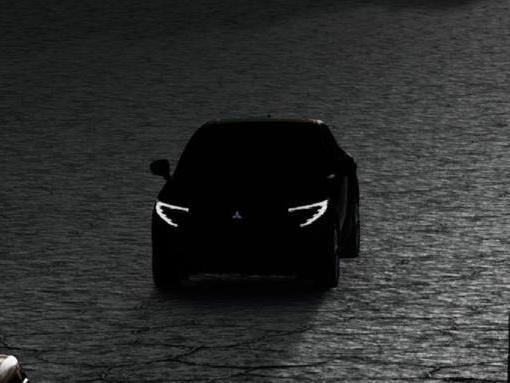
Mitsubishi to Launch Electric Vehicle Based on Nissan Leaf in Second Half of 2026
LienMay 8, 2025
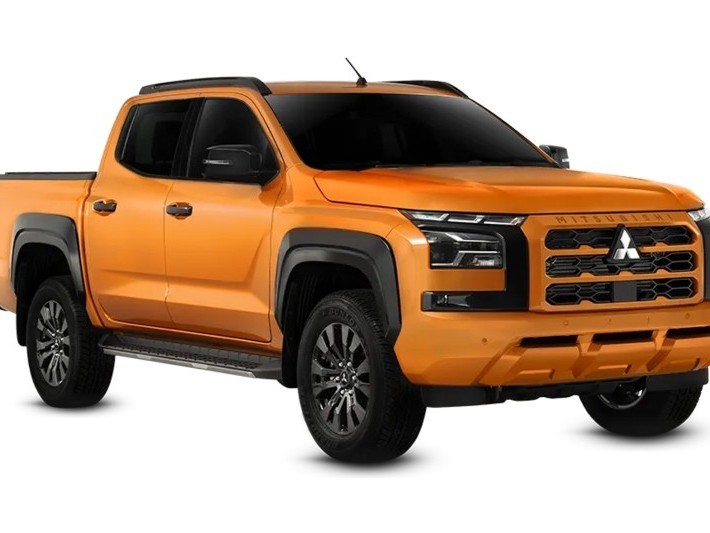
Why is the Mitsubishi Triton So Popular? Key: Sturdy Chassis and Excellent Four-Wheel Drive
WilliamApr 21, 2025
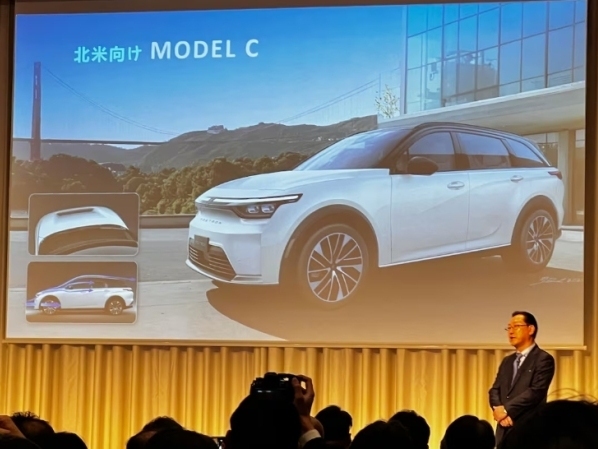
Foxconn, iPhone Manufacturer, Holds a Seminar in Tokyo to Attract Japanese Car Brands Partnerships
AshleyApr 10, 2025
View More








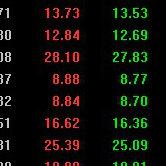



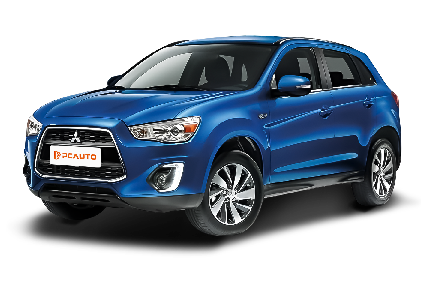





Pros
Cons